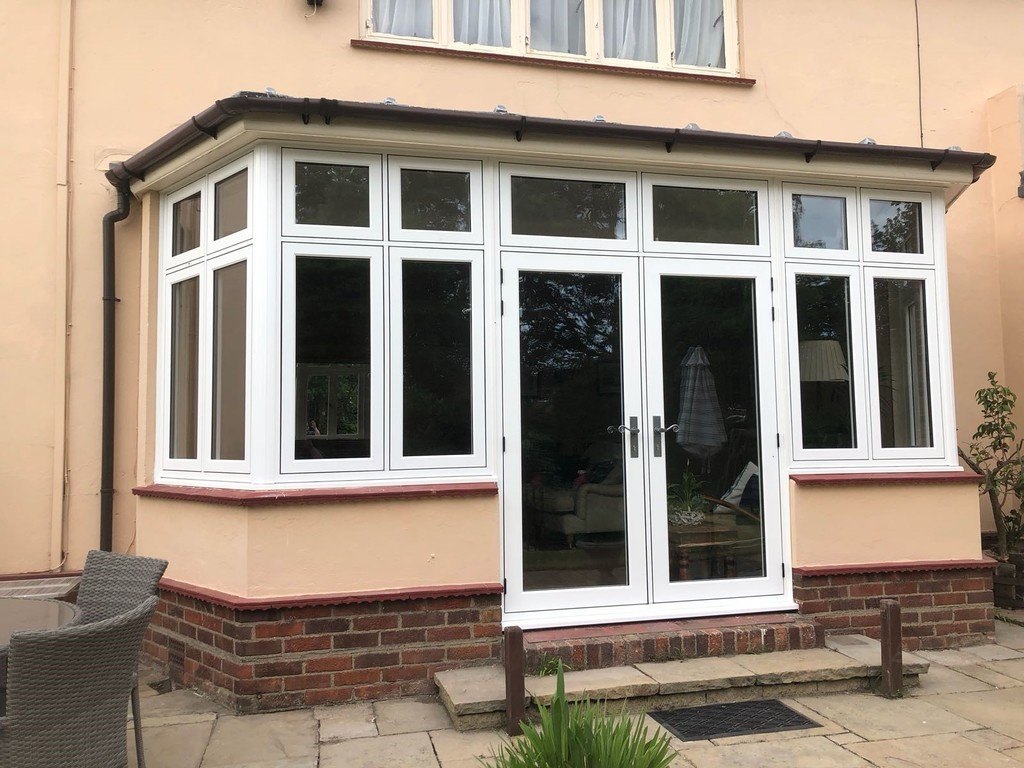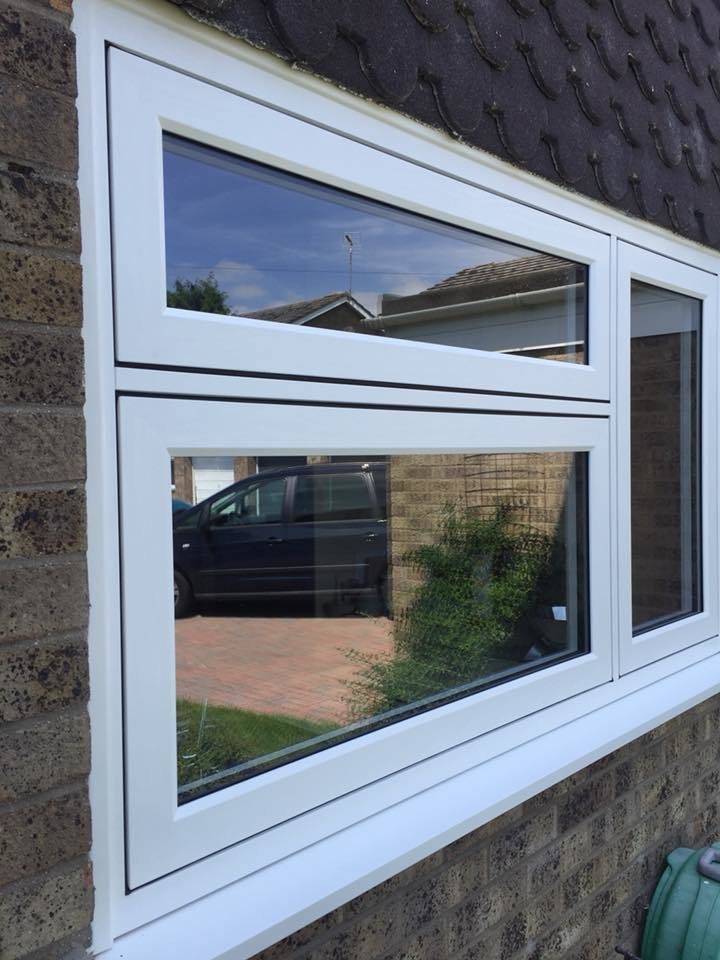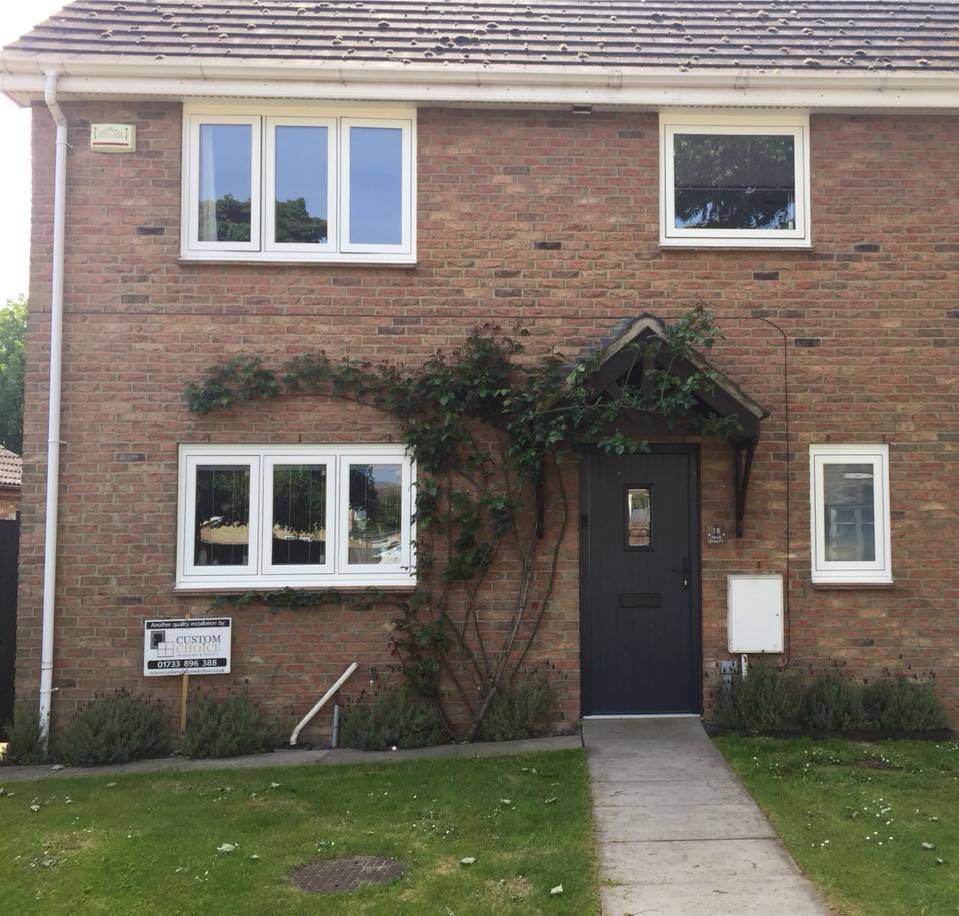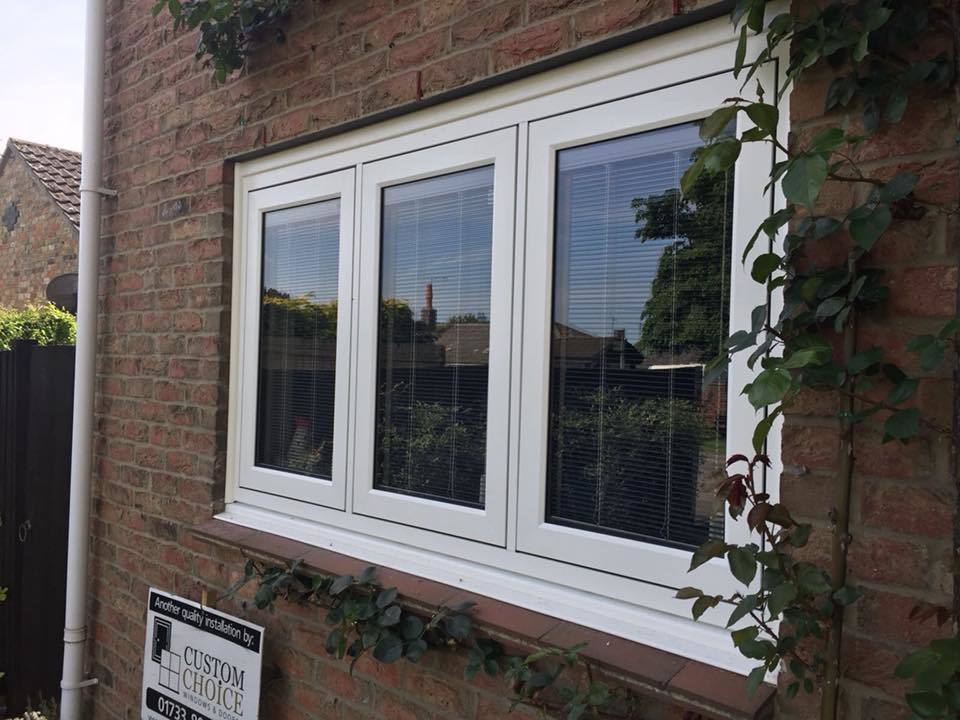Ultimate Guide To uPVC Replacement Windows
Discover your options with our complete guide to window styles to upgrade or renovate your home.
Ultimate Guide To uPVC Replacement Windows For Residential Houses
The most common replacement windows in the Peterborough, Cambridgeshire and Lincolnshire regions are uPVC windows (no surprise there).
However, they’re also the most common windows being replaced (many believe wooden, metal or single glazed units are the most common window types being replaced – but they’re now in the minority after over 50 years of ever improving uPVC technology).
Softwood windows, which are not regularly serviced (ie. treated and repainted) fail after just a few years (rot sets in fast once water gets in).
It’s the same with metal windows (both galvanised steel and aluminium) if they’re not treated and maintained properly (although galvanised steel typically lasts 75 years, the galvanisation process can be flawed and rot can set in).
Hardwood windows last longer than softwood obviously, but even the hardest wood (eg. mahogany, or treated sustainable woods – eg. Accoya) fail eventually (especially in damp conditions).
Wooden sash windows almost always end up being ‘painted-in’ as maintenance on them is never easy (it’s not just the windows and frames, it’s the sliding nature of the sash window mechanism – pulleys and jambs included).
WHAT MAKES US SPECIAL
The Custom Promise
![]() The Most Competitive Prices
The Most Competitive Prices
![]() Bespoke Fitting and Surveying
Bespoke Fitting and Surveying
![]() Fully Trained & Friendly Staff
Fully Trained & Friendly Staff
![]() Total Peace of Mind
Total Peace of Mind
![]() Over 40 years EXPERIENCE
Over 40 years EXPERIENCE
![]() 10 year Insurance Backed Guarantee
10 year Insurance Backed Guarantee
![]() FENSA Registered
FENSA Registered
![]() We will beat any like for like quote
We will beat any like for like quote
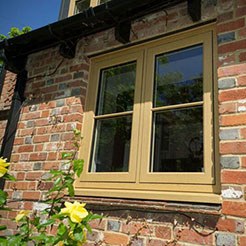
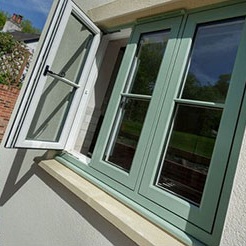

PVC – Polyvinyl Chloride
You may think uPVC is better than PVC. This is a common misconception. The ‘u’ in uPVC means unplasticized. All PVC is unplasticized to start with. Plasticization was added in order to be able to use PVC as a rubber alternative.
What has evolved is the nature of PVC itself. Different elements have been experimented with and added over the many years since PVC was discovered (in 1872 by Eugen Baumann).
These include:
- The ability to withstand higher temperatures
- Heat loss reduction
- Ultra Violet (UV) light stabilizers
- Plasticizers (to increase flexibility)
- Impact resistance
- Flame retardancy
- Smoke suppression
- Biocide reduction (to reduce harmful effects of the plastic)
- Pigmentation additives (for different colours)
The PVC of today is a very different plastic to that of windows made with it in the 1970’s.
We Meet the Strict Criteria of British Standards for Enhanced Security for Windows
“You can choose from highly efficient double or triple glazed units, attaining U-values of 0.8 with triple glazing, and 1.2 with double glazing, far surpassing the British Building Regulation requirements. All of this contributes to lower energy bills, keeping you cosy in the winter and cool in the summer.”
Wood Replacement Options
If a house is Grade II or I listed and has wooden or metal windows, getting planning consent to replace them with PVC is next to impossible. However, non-graded buildings that are in conservation areas can now (still subject to planning consent) be approved for uPVC replacement windows.
This only occurred recently when window manufacturing companies like Residence came up with better uPVC replacement windows that so mimic wood, it’s hard (certainly from a distance) to tell the difference (and it’s certainly better as far as environment, maintenance and value are concerned – no painting or chemical treatment is required and considerably less heat loss is sustained, not to mention they’re usually maintenance free).
FENSA
If your house is not in either category (ie. not a listed building or in a conservation area) then you’ll have no problem replacing your windows (but note that window replacement requires local council consent to ensure building regulations are followed – however, if your installer is FENSA registered – as Custom Choice of Peterborough are, then your windows will be certified by the installer).
Wood can also be replaced with wood, and these days, specially treated sustainable woods can be used that last considerably longer than traditional replacement wood windows. However, you’ll always get better results from modern uPVC replacement windows including:
- Better energy loss prevention
- Improved sound-proofing
- Easier to use
- More options
- Maintenance free
- Adjustable
Common Problems With Older Windows
Draught
Draughty windows are in the top 3 major problems when it comes to thinking about replacement windows. If the existing windows are wood, there’s not much you can do.
A common option is to buy draft excluder stick on strips. However these often look ugly because the window was never designed to have them in the first place.
Also, there’s often no room to apply the draft excluder. This may be because the window itself has warped in some way, or more likely, many coats of paint have been applied over the years without sanding back the previous coat.
Another solution are nailed on draft proof strips, but these tend to be even uglier, and also open breaches in the window’s surface area letting in damp. Avoid these at all cost.
If your old windows are uPVC, then it may be possible to adjust them. It depends on their age and if any faults have developed from flaws in the plastic. Ask your installer for their opinion. A good installer will tell you the facts in a simple way and not pressure you to replace them.
If your windows are metal, there’s very little you can do about drafts other than applying stick on draft excluders, but again, because the windows were never designed for this type of thing, they’re not easy to get right, and often impinge how the window opens.
Rot
You may think this only applies to wood, but you’d be wrong. Aluminium windows can oxidise if the coating is breached in any way, and just like all metal objects, once oxidisation sets in, it can spread fast.
Galvanised steel can also break down if the original galvanisation process was flawed in any way. But even the toughest will not last longer than 35 years in extreme environments. This is why the protection of the environment matters. Acid rain is not a good thing when it comes to metal (or stonework or anything else for that matter).
But the most common problem for wooden windows is rot caused by damp. Once the outer wall is breached and damp gets in, it needs to be dried out fast, or bacteria develop that eventually leads to rot.
Breaches in the surface area of wood also let predatory insects eat away at the interior. By far the most common are beetles (woodworm is a beetle).
There are numerous damp treatments available for wood, including chemicals that will stabilise the rot, but over time, your lovely wooden windows will resemble an old car’s bodywork – full of filler and very little else.
Noise
Contrary to common belief, the most common reason for switching to double-glazing is noise-reduction. Heat loss is far more important from the environmental point of view – as well as the money saved from spending less on energy, but noise in built-up areas, especially near motorways or other busy roads can affect our sleep patterns too, so it’s no wonder that people have moved to double-glazed windows over the years.
Heat Loss
Perhaps the most important reason of all to replace older windows with modern ones is to reduce household heating bills and keep your house warmer at the same time.
Glass has also evolved unrecognisably during the last 50 years with new processes appearing regularly that continuously add better insulation properties.
But it’s not just the glass. All the materials in a modern uPVC window have evolved too including the plastics themselves as well as the furnishings such as flush casement windows (they not only look great, but they allow the wind to blow smoothly over their outer surface reducing wind noise at the same time).
In fact, modern uPVC windows are so efficient, they come with draft control built in – because often you’ll want to let a little air flow through the house – not least during the hot summer months.
An important factor in heat loss is the choice of gas used within a double-glazed unit. The cheapest use dehydrated air (ie. air with all moisture removed), but the best use inert gasses such as argon, krypton or xenon. This can result in a further 30% reduction in heat loss.
Note that sealed double-glazed units can be slimmer with the same efficiency when using an inert gas, although they are more expensive.
Heat loss is measured using the U factor (or U value). The lower the better. A single pane window will have a U factor of 1.22, whilst the highest rated triple-glazed gas filled windows will have a U factor around 0.15 (double-glazed units can achieve 0.30).
This is not to be confused with the R rating (used for other parts of a house). You can convert a U rating to an R rating by dividing it by 1 – eg. a U factor of 0.50 is equivalent to an R factor of 2 (1 / 0.50 = 2).
Security
Another important topic is window security. And it’s not just in built-up areas such as towns. Rural regions also suffer from crime, and having windows (especially downstairs) with good quality security locks will prevent most would be criminals from gaining entry.
Security locks on windows and doors also reduce your household insurance bill. The stronger the locking system, the less you’ll end up paying year in year out for building content insurance.
You can check the BSI ratings on the British Standards Institute website page for doors and windows here. Note that Custom Choice of Peterborough is a BSI registered firm.
Other Window Problems
Condensation
It doesn’t matter whether a house is single or double-glazed, both can suffer from condensation, which can sometimes be so extreme, water almost flows from it. This is a common problem in older houses with wooden windows, even when good ventilation is present.
For double-glazed units, any breach in the window pane itself can allow moisture in, and once inside a double-glazed unit, it becomes hard to remove.
Misting
Misting is caused by condensation. The problem with misting is that over the years a build up of condensation caused by a breach in the seal of a double-glazed unit will also let in dirt, And that dirt will build up over time causing a window to become permanently misted.
Jamming
Old windows of all types can become jammed or hard to open and close. Wood is by far the worst of these, with buckling, splitting, warping and expansion due to damp being the biggest cause.
Over painting also causes windows to become stuck, and often they end up being painted-in as the easiest option to stop them rotting any further. The problem is, the window then becomes impossible to open, causing all sorts of other problems (including the ability to escape from the house should a fire start).
Broken
It’s amazing how many windows are simply not working. This is due to all the issues mentioned so far, but having a non-opening window for whatever reason is never good. And whilst it may inhibit criminals, it does nothing for the value of the house, nor the comfort of the family living in it.
Non-working windows can also inhibit air-flow, which is a necessary part of all buildings that do not have some kind of air-conditioning built in (which is the vast majority of British houses).
Older houses require ventilation of some sort, especially where joists are used and not concrete or solid flooring. Modern windows have this built in and are fully adjustable.
Something as simple as losing a window security key effectively renders the window inoperable too, and even if it was in the open position at the time of the loss, then it becomes a security risk which an insurance company won’t look kindly upon should the worst happen (which is why we pay for insurance in the first place – if you’ve lost any window security keys, now’s the time to get them replaced).
Design
Some older windows simply look ugly. Early uPVC window frames were thicker than modern ones, and when compared with today’s sleek designs, can look very dated.
Also, Georgian look-alike windows or bi-split windows were often manufactured very cheaply with inserts that consist than no more than a thin strip of plastic.
Modern designs look as though they contain many panes of glass, but are often in fact still a single, highly efficient unit.
When uPVC first came out, you had a choice of any colour you wanted as long as it was white. uPVC has come on a long way since those early days, and now there is a wide choice of colours to choose from.
Bear in mind they are also maintenance free, and you start to appreciate why they are now the first choice when it comes to window replacement.
Visit Custom Choice showroom at Unit 1 Prospect Place, Fengate, Peterborough, PE1 5QP where you’ll be able to see a wide selection of designs to suit all pockets, plus all window and door installations come with an option to choose 0% interest free finance payable over a number of years.
Window Opening Styles
In the early days there were 3 ways window could be opened. Sash was the most common with windows sliding up and down to open them. Windows could also be opened vertically or horizontally.
Today, you still have these options, but now you also have slide-and-tilt options and a whole lot of other intriguing and interesting ways to add elegance to your home. Here’s some of them:
Casement Windows
Casement windows are the most common. These have hinges on the side of either the left, right or both windows. There are also single casement windows with a single side opening, sometimes used in narrow bathrooms, small bedrooms or hallways.
Awning Windows
Awning windows are hinged and open at the top and are the most common in bathrooms since they preserve a certain amount of privacy (note that an awning window is another type of casement window in that the window is enclosed in a casing – it’s just better to refer to it as an awning window as it leaves no doubt as to what you want).
Hopper Windows
Hopper windows are hinged at the bottom and are very common in 20th century office and utility buildings. They’re most often made of metal or aluminium, and are rarely used these days.
Pivot Windows
Pivot windows are hinged centrally, either at the top (for vertically opening windows) or the sides for horizontally opening windows). These are most common in office, utility and high rise flats.
Tilt and Turn Windows
Tilt and turn windows are a modern alternative to traditionally hung casement windows and can improve the look of modern homes, making them stand out from the ordinary. There are a variety of ways they are designed, including windows that slide and tilt and also half tilting windows (where, for example, only the lower half of the window tilts).
Sash Windows
Sash windows are vertically sliding windows very prominent from the Georgian period onwards and for many houses, they add a period elegance you cannot get from other styles. Modern uPVC sash windows no longer have a sash and instead use clever sliding mechanisms to achieve the same effect.
Weighted sashes were necessary previously since the weight of a window would make it difficult to both open and close without something to balance them.
Modern uPVC windows from the Residence range are now usually accepted as wood replacements for listed and conservation area buildings as they are hard to distinguish from the traditional wooden designs.
Sliding Windows
As well as modern vertically sliding windows, horizontally sliding windows are also an option if there is limited space in front of or behind the window opening (or you are looking for something different).
Single, Double and Triple Glazing Glass Types
There are three types of glass most commonly used in all types of window installation. These types can be further modified to reduce heat-loss, damaging ultra-violet rays, noise and fire.
Float (Annealed) Glass
Float glass is the most common type of glass used. Toughened glass is float glass that has been heat treated. We’ll go on to that next.
Float glass is also the cheapest glass to buy. The annealing process simply means letting the glass cool naturally without stressing it in any way.
The problem with glass cooled this way is that it breaks into dangerous sharp jagged sized pieces.
Toughened Glass
Toughened glass is annealed glass that has been subject to heating and rapid cooling. This process changes the internal structure of the glass, which is easy to tell, since it shatters into small cubes that are considerably less dangerous that float glass.
Toughened glass is much harder to break than annealed glass, hence its name. Toughened glass is also known as tempered glass.
Laminated Glass
The final main type of glass is laminated. This is the toughest of all, which is why it’s also called safety glass. The glass consists of multiple layers using plastics such as polyurethane and ethyl vinyl acetate.
Noise Resistant
Laminates are also used to increase the effectiveness of sound-proofing. This can be helpful for noisier environments such as buildings in and around airports and flight paths.
Coated Glass
All types of glass can be coated, which adds further protection of various kinds. These include:
Self-cleaning
Titanium dioxide as added to the surface of glass that reacts with the atmosphere reducing any organic matter to smaller particles.
Low E Glass
All glass is rated using the U energy scale. This is known as low emissivity glass, which is why energy efficient glass is called E Glass.
The most efficient windows in terms of heat loss will have an A+ rating. It’s not just the glass that matters though, it’s also the window manufacturing process itself as well as all the components used in the window construction that, when combined, can produce the most energy efficient window installations.
Summary
We hope you found this guide to replacement windows useful. If you’d like any further information or a competitive quote for window, door or conservatory installations in the Peterborough, Cambridgeshire or Lincolnshire regions, please call Custom Choice on 01733 300686 or visit their window and door showroom in Peterborough. Click here for directions.
![]() Full mechanical joints emulating traditional joinery
Full mechanical joints emulating traditional joinery
![]() Run-through sash horn
Run-through sash horn
![]() Authentic woodgrain finish
Authentic woodgrain finish
![]() Traditional globe claw furniture
Traditional globe claw furniture
![]() Ultra slim sightlines, including 35mm meeting rail
Ultra slim sightlines, including 35mm meeting rail
![]() Authentic surface-mounted astragal bars in a range of period designs
Authentic surface-mounted astragal bars in a range of period designs
![]() A-rated energy efficiency
A-rated energy efficiency
![]() Tilting sashes for easy cleaning
Tilting sashes for easy cleaning
![]() Maintenance free – no more painting!
Maintenance free – no more painting!
![]() Anti-jemmy bar
Anti-jemmy bar
![]() Wide choice of furniture colours and glass options
Wide choice of furniture colours and glass options
![]() Safety-enhancing limit stops that restrict how far sashes open (optional)
Safety-enhancing limit stops that restrict how far sashes open (optional)
With detailed period features such as these, coupled with the deep bottom rails and external putty lines, it would take an expert to tell it apart from a genuine timber sash. What’s more, you get all that careful craftsmanship, historic detailing and vintage appeal with the all-round exceptional performance of twenty-first century uPVC.
See our outstanding customer reviews
A Selection From Our Custom Choice Home Improvements Gallery

Our products come with a
10 YEAR
Insurance backed guarantee
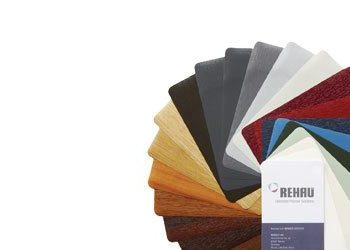
See our wide
Range of colours







